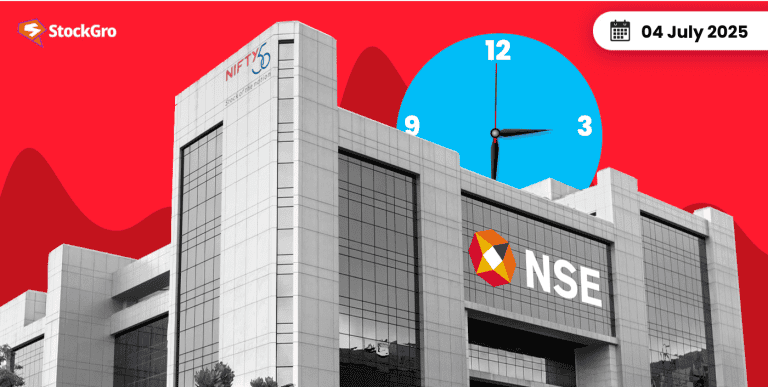
Following a 22.5% growth from the previous financial year, the assets under management of the mutual fund industry have reached ₹72.2 lakh crores as of May 2025. The growth rate is backed by increased investor participation, which stems from the growing popularity of mutual funds and SIP investments. Moreover, more than 200 debt mutual funds have outperformed bank fixed deposits, providing investors with a blend of security and return.
In such a scenario, this blog explores the best liquid mutual funds of 2025 based on industry metrics and performance records.
What are liquid mutual funds?
A type of debt mutual fund investment that invests its funds into highly liquid securities, such as debt instruments and money market instruments, with a maximum residual maturity of 91 days, is called a liquid mutual fund. Redemption requests in the case of liquid mutual funds are processed within one working day.
Investors interested in investing for a shorter duration, typically one day to three months, might choose this investment medium. Therefore, liquid mutual fund managers aim to choose optimally rated securities with a very low possibility of default and a short maturity period.
However, to choose the best liquidity funds, investors must compare certain metrics and parameters.
Factors to Consider before investing in the best liquidity funds
Various metrics and standards aid in the optimal analysis of the best liquidity funds. Understanding the meaning of these parameters is integral to research-based investing.
- Asset under management: The cumulative market value of all assets held by a mutual fund at a given tenure through the investment pool of its investors is called the asset under management.
AUM helps investors understand the scale and credibility of a mutual fund. However, AUM must be utilised with other metrics for a holistic analysis.
- Ratios: Various ratios and metrics aid in understanding the degree of risk associated with a mutual fund investment. The table below shows the category average returns of liquidity mutual funds as of 31 May 2025.
| Tenure | Sharpe Ratio | Sortino Ratio | Standard deviation |
| 1 year | 1.3775 | 102.4987 | 0.4198 |
| 3 years | 0.6816 | 6.7005 | 0.5156 |
| 5 years | -0.4978 | 0.6398 | 0.7332 |
| 10 years | -1.1785 | 0.0112 | 0.8646 |
| 15 years | -1.5568 | -0.2881 | 0.8399 |
- Performance: The return generated over a particular tenure helps investment planning. Investors often choose liquid mutual funds for a short tenure. The table below shows the returns of liquid mutual funds within a year.
| Tenure | Category average (%) | Top performer (%) | Bottom performer (%) |
| 3 months | 1.69 | 15.62 | 0.00 |
| 6 months | 3.49 | 33.67 | -1.01 |
| 9 months | 5.39 | 56.91 | 0.00 |
| 1 year | 7.37 | 84.48 | 0.00 |
| 2 year | 7.27 | 77.60 | 0.00 |
Also read: What is Systematic Withdrawal Plan (SWP) in Mutual Fund
Top 5 liquid funds
The top 5 liquid funds are selected based on their asset under management as of 23 June 2025.
| Particulars | ICICI Prudential Liquid Fund Direct Plan-Growth | Aditya Birla Sun Life Liquid Fund Direct-Growth | Nippon India Liquid Fund Direct-Growth | Axis Liquid Direct Fund Growth | Kotak Liquid Direct-Growth |
| Asset Under Management | ₹49999.91 crores | ₹44545.61 crores | ₹36125.36 crores | ₹36089.09 crores | ₹36087 crores |
| Manager | Nikhil Kabra and Darshil Dhelia | Kaustabh Gupta, Sunaina da Cunha and Sanjay Pawar | Vikash Agarwal | Devang Shah, Aditya Pagaria and Sachin Jain | Deepak Agarwal |
| Fund risk | Low to moderate | Low to moderate | Moderate | Low to moderate | Low to moderate |
| Sharpe Ratio | 2.05 | 2.38 | 0.23 | 2.33 | 2.02 |
| Sortino | 2.12 | 2.47 | 2.34 | 2.36 | 2.12 |
| Standard deviation | 0.23 | 0.23 | 0.23 | 0.23 | 0.23 |
| Rolling return (Average 1 year % rolled daily) | 6.74 | 6.81 | 6.77 | 6.86 | 6.76 |
The following are the key takeaways from the best liquid mutual funds of 2025.
- ICICI Prudential Liquid Fund Direct Plan-Growth: With a low to moderate risk rating, the fund maintains the largest AUM among its peers, indicating strong investor confidence and high liquidity. However, the risk-adjusted ratios of the company, like Sharpe and Sortino, are among the lowest among the top 5 liquid funds.
- Aditya Birla Sun Life Liquid Fund Direct-Growth: The fund has the second-highest rolling return with the highest Sharpe and Sortino ratios. This indicates high returns with controlled risks. Its Alpha and Beta stand at 1.50 and 0.50, respectively. Moreover, its one-year return is 7.33%.
- Nippon India Liquid Fund Direct-Growth: It has a risk rating of moderate, which is slightly higher than its peers. However, its returns are competitive, with a one-year return of 7.30%.
- Axis Liquid direct fund growth: Although it has the second-lowest AUM among the top five liquid funds, it has the highest rolling return and the Sharpe ratio. Moreover, the Sortino ratio is the second-highest after Aditya Birla. Therefore, its risk and return dynamics are competitive.
- Kotak Liquid Direct-Growth: With a low to moderate risk profile, the fund has the lowest risk-adjusted ratios among its top 5 peers. This indicates a probable diminished efficiency in generating returns, given the degree of risk.
Also read: Mutual Funds Vs. Hedge Funds
Strengths of the best liquid mutual funds
Some advantages of liquid mutual funds based on the latest trends and observations are discussed below.
- Competitive returns: The returns provided by the best liquid mutual funds are competitive, given their asset portfolio. Liquidity mutual funds invest primarily in money market instruments and short-term debt instruments that have conservative returns and safety.
- Expense ratio: It is lower for liquid mutual funds compared to equity and other debt mutual funds. Therefore, investors have higher returns available to them. The lower expense ratio is because equity and other debt instruments are market-linked and require greater observation and corrective actions.
- Taxability: Liquid mutual funds fall under the specified mutual fund category. There is no capital gains tax applicable to it in the long term. Moreover, in the short term, capital gains are taxable as per the applicable tax slab.
| Tenure | Rate |
| Short-term | As per the applicable tax slab |
| Long-term | Not applicable |
Risks of liquid mutual fund investment
However, there are certain caveats to liquid mutual fund investments that an investor must remember.
- Returns: Liquid mutual funds provide lower returns than equity and other market-linked debt mutual funds.
- Trends of the short-term category: There are different types of short-term mutual funds. Before investing, the trends might help determine investment strategy. For instance, in May 2025, money market funds attracted the second-highest fresh inflow of about ₹11,223 crores in the entire debt mutual fund category. Whereas liquid funds witnessed the largest outflow, amounting to ₹40,205 crores.
Also read: Beyond stocks: Can mutual funds invest in options and futures
Bottomline
With short maturity, liquid funds invest in money-market and other non-market-linked debt instruments. Therefore, it can provide competitive returns with controlled risks. This characteristic might make it attractive for investors who want to prioritise controlled risk over return. Exploring the top 5 liquid funds can help investors shortlist the best liquidity funds of 2025. Complementing equity and market-linked securities with liquidity mutual funds can help in securing the portfolio through optimum diversification, while striving for returns.
FAQs
A liquid mutual fund is a form of debt mutual fund investment that allocates its capital to extremely liquid assets, including money market and debt instruments, with a maximum residual maturity of 91 days. When it comes to liquid mutual funds, redemption requests are handled in a single business day.
Debt mutual funds invest primarily in debt funds. However, a certain proportion of its portfolio might contain equity funds. However, liquid mutual funds invest in debt funds with short maturity. Moreover, debt funds are more linked to the market than liquid funds. In essence, liquid funds are a type of debt mutual fund with a shorter maturity.
Money market securities are highly liquid, low-risk assets that are short-term debt instruments, usually having maturities of one year or less. Large enterprises, financial institutions, and governments utilise them to supply liquidity to the financial system and handle short-term cash flow requirements. Liquid mutual funds invest in money market instruments.
Government securities (G-Secs) offered by the state and union governments are the main portfolio constituents of gilt funds. It is a kind of debt mutual fund. Because the government is backing these securities, they are seen as low-risk. Nonetheless, gilt funds are still vulnerable to interest rate risk, which means that shifts in interest rates might affect their returns.
No investments are risk-free. A degree of risk is associated with almost all mutual fund investments. For instance, currently, money market funds are attracting inflows, whereas liquid funds are witnessing outflows. It might indicate a diminished investor interest. Therefore, optimum analysis of investment mediums through a thorough analysis of their risk and return is necessary to minimise risk.

